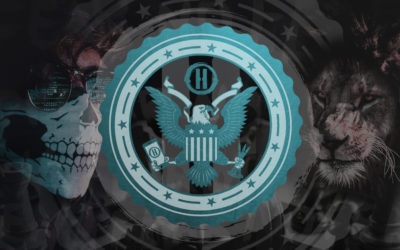As owners, starters, entrepreneurs, and especially solopreneurs, it’s vital to stay motivated, growth minded and always be improving. Along the way, we stall out sometimes and our energy dips, as does our motivation, and our performance. To rescue yourself from this I recommend a tactic of choosing someone/organization in your league to compete against; to annihilate in business, to out do, out perform in every way.
In the world of running this is easy. You find someone about your pace and fitness level and use them as your measuring stick. You study their gait, listen to their breathing, and at that one strategic point you pass them up and make them eat your dust. In sailing this is the moment when you steal their wind. These micro-competitions require a lot of analysis and comparison of yourself/brand to others. If you choose the right one, you can make dramatic improvements and ride the high of your achievement. If you choose poorly, you may be left in the gutter and have to choose again. The point is to start – Start by choosing one and only one competitor to focus on.
Pick an enemy. Choose someone to race. Choose someone who does what you do, in the same or slightly higher class, and compete to do it better. Comparing yourself to others can create a lot of grief in your personal world. Comparing your business to other businesses to improve your brand, practice and position is a great technique as old as business and war itself.
A word of awesome: This concept (or at least the oldest reference I’m aware of) comes from the meditations/focused writings of the Samurai. In fact, The Book of the Five Rings by Miyamoto Musashi is required reading for the Heroik MBA as well as Harvard MBA students.
In the business world, choosing an enemy is a common strategy wherein you identify a single, worthy competitor and analyze and compare all of their important attributes to your own. Consider:
- features/benefits
- target market
- capabilities – strengths, weaknesses, motivators, etc.
- important UI/UX elements
- positioning
- brand narrative – the story they’re trying to tell
- values and culture – the beliefs, principles and how they’re integrated into their practice and product.
- team/employees
- Compare them with your own so that you can address the gap and surpass them in meaningful ways.
A word of discernment: Enemies and Muses are different
Other biz geeks may refer or confuse this with modeling or choosing a muse. Lately in business lit, there have been many references to greek literature (Mostly Tim Ferris to blame there- I’m not saying it’s his fault…I’m just choosing to blame him).
First, muse is a very feminine word. I have nothing against feminine words except when their use hinders motivation and performance. And using the phrase doesn’t necessarily get my blood going.
Second, in Greek mythology, the muses were the daughters of Zeus and goddesses in their own right. Women are motivating, don’t get me wrong, but chasing the untouchables is a pro-sport left to a very few exceptionally determined characters (e.g. How I met my fiancee #hat-trick). It can happen, but chasing our muse can leave us broken. Choosing a muse is really about getting inspired by something out of your league ( getting distracted by the woman in the red dress -look again). It’s about connecting with your passion. You want to be inspired by the methods of the big players, big ideas, your Apple’s and Facebook’s to be sure. You want to SWIPE from them what you can. However,
A) Everybody does that. It’s not hard. As a society, we seem to be rich on passion and ideas but poor on execution and follow through. Most people don’t study their muse in a way that inspires their ACTIONS and when they do study them, they often get lost in awe and amazement/ idol worship. (YAWN). And then they go down in flames.
B) It rarely gets you to that next level. In order to reach that next level, you need to choose an enemy in your league, who you can study, steal wind from and over take.
C) Your measurement standard mus suit your stride, pace and ambition.Comparing yourself to a titan like say Facebook does you little good and makes measuring your own progress impossible. That’s like measuring your progress in millimeters and comparing it to the literal “mile” stones of huge organizations, or running an ultra marathon as your first race and comparing your pace to the front runners. Guess what? You will derive no joy, no high, no energy boost or groovy feel-good brain chemicals we get from making progress when you compare your mile time to that of a cheetah or even a gazelle. If you compare your efforts to the major leagues be careful, as Admiral Ackbar says “It’s a trap!”
I’ve got nothing against the historic framing, or muse modeling, but in my opinion, I think it’s a better #growth-hack your endeavors by taking advantage of your brain chemistry. What I mean by that is that by framing a challenge or challenger by addressing/imagining a perceived physical threat e.g. an enemy, a T-rex, a bear that’s hungry and ready to eat you, a competitor that’s willing to take your customers and is okay if you end up living with your parents with your wife and kids. Mentally frame an adversary and visualize them eating your lunch. This gets your juices flowing. Yes this will trigger stress and cortisol, but if you choose an enemy who is in your league, you’re body and mind will rise to the occasion in balance, thus making it healthy stress.
It’s easier to frame progress, improvement and achievement when you have way points to measure. Every time you match a feature, or improve your standing to your target, you get a nice little dopamine high. The more we identify and can recognize our progress the better we feel. If you’re a solo-preneur, you know that keeping your energy level high is vital to Getting Shit Done. If you don’t feel that you’re progressing, you’ll stall out or worse, abandon the effort. If you try to bullshit yourself by counting shit that doesn’t matter, e.g. Facebook “likes” and how much spam you’ve opened that day, you won’t feel better either. By choosing an enemy in your league, it gives you something clear, achievable to crush. AND IT FEELS GOOD TO DO IT. We’re hard wired to reward ourselves for meaningful progress.
I find the choose an enemy tactic and enemy framing this to be especially effective with men. They perform better when they think of it as facing a dragon or mortal enemy than listening to/fawning over a princess/muse. Enemies invite competition which gets all those wonderful brain chemicals in the mix as well. This may also be influenced by societal conditioning and competition but regardless of the reasons- it’s an amazingly more effective way to frame a challenge and respond to it.
So….What do you do after you’ve chosen an enemy in your league? Here are but a few questions to consider:
A. Analyze their marketing material and position.
What’s good about it? What’s bad?
How can you improve yours?
What do you need to add?
What do you need to take away?
B. What market are they focused on?
Do they appear to be succeeding? If not, why not?
Is it an actual customer base or just investors?
Pay close attention and you’ll be able to spot the start-ups and businesses that focus too much on investors, partners and shareholders and ultimately lose their way vs. those that are focused on bringing a viable idea to market or serving their existing customers with greater efficiency and impact. You can point out competitors who are in it for the dollars not to create value for users (which will leave them sucking wind in the eyes of many).
C.Analyze their brand narrative.
When evaluating viability of a start up, V.C.’s are paying more attention than ever to the soft infrastructure (e.g. the brand narrative: beliefs, culture, values that are shared with target market and how they’re woven). When choosing a brand, consumers consciously and unconsciously look for signs of shared values, a culture or ethos at work. So bearing that in mind…
What is their story? Why are they doing this? What do they believe in? How is this present in their product/service? How is it integrated into their style of work/culture? Does it resonate with you? Would you buy their service because of it? What’s you’re story? What do you believe in? Do you believe that resonates with your target market? How are you pointing out to your customers that your values are baked into your service?
D. Hack Attack What are the 10 most important UI/UX elements of their service and site?
Limit your answer to 10 and consider reverse engineering them. This is usually fairly easy to do.
What do yo need to incorporate into your model? Noodle on this. We can compare notes and discuss what we see. Maybe as an outsider I’ll notice something you don’t. Maybe I won’t.
Pro Tip 1: #SWIPE – Steal With Integrity and Pride Everyday. Most of the elements other businesses use: their tactics, features, narrative, are open source, ripe for the taking. Take the stuff you admire. Take the stuff that works. Recognize the crap that doesn’t. Filter it through yourself, your brand and own values. Then integrate it into your work. Welcome to the real world of how shit works; from books to code, to programs, phones, gadgets and products of all kinds.
Pro Tip 2: #SWIPE from adjacent and even unrelated models/methods. Cultivating from more diverse sources allows you to curate elements for your own particular variety and premium blend of solution. You may be a software company inspired by a fashion company or vice versa. Maybe you’ll scrape an idea from a nature documentary. Be ready with pen and paper and open mind to grab and apply inspiration from anywhere. #Read Steal Like an Artist



0 Comments